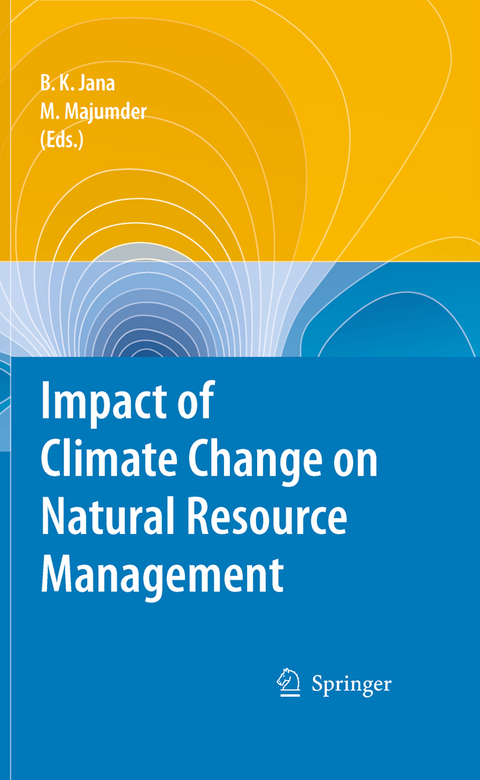
Impact of Climate Change on Natural Resource Management
Springer (Verlag)
978-94-017-7774-2 (ISBN)
Beginning with papers on carbon sequestration, including the practice of artificial desertification, the topics move on to cover the use of distributed modeling and neural networks in estimating water availability and distribution. Further chapters look at uncertainty analysis applied to the spatial variation of hydrologic resources, and finally the book covers attempts at estimating meteorological parameters in the context of hydrological variables such as evapo-transpiration from stream flow.
Within the next decade, the effects of climate change will be severe, and felt by ordinary human beings. This book proposes a raft of measures that can mitigate, if not reverse, the impact of global warming on the resources we have all come to depend on.
The following authors contributed with their articles: Prof. Dr. Asis Mazumdar (BME, MME, PhD (Jadavpur University (JU)) who is the Director of School of Water Resources Engineering and Co-ordinator of Regional Center, National Afforestation and Eco-development Board; Dr. Debasri Roy (PhD (Calcutta University)) is a Reader of the School of Water Resources Engineering; Dr. Pankaj Kr. Roy (BCE (National Institute of Technology, Silchar), ME, PhD(JU)), Dr. Rajib Das (BE (Utkal University), ME (JU), PhD (Pisa)) are the Lecturers and Mr. Sanjib Das (BE (JU) is the Technical Assistant of the School of Water Resources Engineering; Mr. Arnab Barua (BEE (West Bengal University of Technology (WBUT)), ME(JU), Mr. Biswajit Majumder (BE (National Institute of Technology, Agartala (NITA), ME(JU)), Miss Debapriya Basu (BEE (WBUT), ME (JU) and Mr. Sabyasachi Pramanik (BChE (WBUT), ME (JU)) are the former Master of Engineering students of School of Water Resources Engineering; Mr. Rabindra Nath Barman (BME, ME, PhD (submitted) (JU)) is the Assistant Professor of NITA; Mr.Sashi Sonkar and Miss Suchita Dutta are the Junior Research fellow and Research Assistant of Regional Center, National Afforestation and Eco-development Board whereas Mr. Chinmoy Boral is presently doing his PhD at the School of Water Resources Engineering, Jadavpur University. The book was compiled by Mr. Bipal K. Jana (MSc (CU), PhD (submitted) (JU)) and Dr. Mrinmoy Majumder (BEE (Biju Patnaik University of Technology), ME, PhD (JU)). Bipal Jana is Senior Research Fellow in the School of Water Resources Engineering. He has more than 17 years of experience in the fields of environmental engineering and management. He has completed his bachelor and master degrees in Science at Calcutta University and MBA (P G D Environmental Management) at the Indian Institute of Social Welfare and Business Management(IISWBM). He has authored over 10 papers in national and internationalpublications. Mrinmoy Majumder was Senior Research Fellow in the School of Water Resources Engineering, Jadavpur University, Kolkata. He has obtained his bachelor in Electrical Engineering from Utkal University and his master degree in Water Resources from Jadavpur University. He is the author of 2 books and more than 10 publications in national and international journals.
Impact of Climate Change: Separating the Causes from the Effects.- Estimation of Carbon Dioxide Emission Contributing GHG Level in Ambient Air of a Metro City: A Case Study for Kolkata.- Impact of Climate Change on the Availability of Virtual Water Estimated with the Help of Distributed Neurogenetic Models.- Use of Forest Index or PLANOBAY in Estimation of Water Availability Due to Climate Change.- Application of Parity Classified Neurogenetic Models to Analyze the Impact of Climatic Uncertainty on Water Footprint.- Impact of Climatic Uncertainty on Water Sequestration of a Subtropical River Basin.- Estimating Spatial Variation of River Discharge in Face of Desertification Induced Uncertainty.- Determination of Urbanization Impact on Rain Water Quality with the Help of Water Quality Index and Urbanization Index.- Identification of Water-Stressed Regions of Two Tropical and Subtropical River Basins with the Help of Representative Elementary Area Concept and Neurogenetic Models.- Estimation of the Spatial Variation of Stream Flow by Neural Models and Surface Algorithms.- Estimation of the Spatial Variation of Water Quality by Neural Models and Surface Algorithms.- Estimation of the Spatial Variation of Pollution Load by Neural Models and Surface Algorithms.- Impact of Stressed Climatic Condition on a Small Tropical Tributary.- Determination of Evapotranspiration from Stream Flow with the Help of Classified Neurogenetic Model.- Determination of Urban and Rural Monsoonal Evapotranspiration by Neurogenetic Models.- Natural Resource Management: Mitigating the Impact.- Accumulation of Carbon Stock Through Plantation in Urban Area.- Conservation of Natural Resource with the Application of Carbon Sequestration and Carbon Economy.- Measurement of Diurnal Carbon Sequestration Rateand Aboveground Biomass Carbon Potential of Two Young Species and Soil Respiration in Two Natural Forests in India.- Estimation of Soil Carbon Stock and Soil Respiration Rate of Recreational and Natural Forests in India.- Estimation of Reservoir Discharge with the Help of Clustered Neurogenetic Algorithm.- Water Availability Analysis and Estimation of Optimal Power Generation for a Fixed Head Multi-Reservoir Hydropower Plant.- General Overviews.- An Overview of Hydrologic Modeling.- A Generalized Overview of Artificial Neural Network and Genetic Algorithm.- to Climate Change and Climate Models.- A Brief Introduction to Remote Sensing and GIS.- An Introduction and Current Trends of Damodar and Rupnarayan River Network.- Erratum.
| Erscheinungsdatum | 18.06.2016 |
|---|---|
| Zusatzinfo | XIV, 493 p. |
| Verlagsort | Dordrecht |
| Sprache | englisch |
| Maße | 155 x 235 mm |
| Themenwelt | Naturwissenschaften ► Biologie ► Ökologie / Naturschutz |
| Naturwissenschaften ► Geowissenschaften ► Geografie / Kartografie | |
| Naturwissenschaften ► Geowissenschaften ► Geologie | |
| Naturwissenschaften ► Geowissenschaften ► Hydrologie / Ozeanografie | |
| Naturwissenschaften ► Geowissenschaften ► Meteorologie / Klimatologie | |
| Technik ► Umwelttechnik / Biotechnologie | |
| ISBN-10 | 94-017-7774-8 / 9401777748 |
| ISBN-13 | 978-94-017-7774-2 / 9789401777742 |
| Zustand | Neuware |
| Haben Sie eine Frage zum Produkt? |
aus dem Bereich


